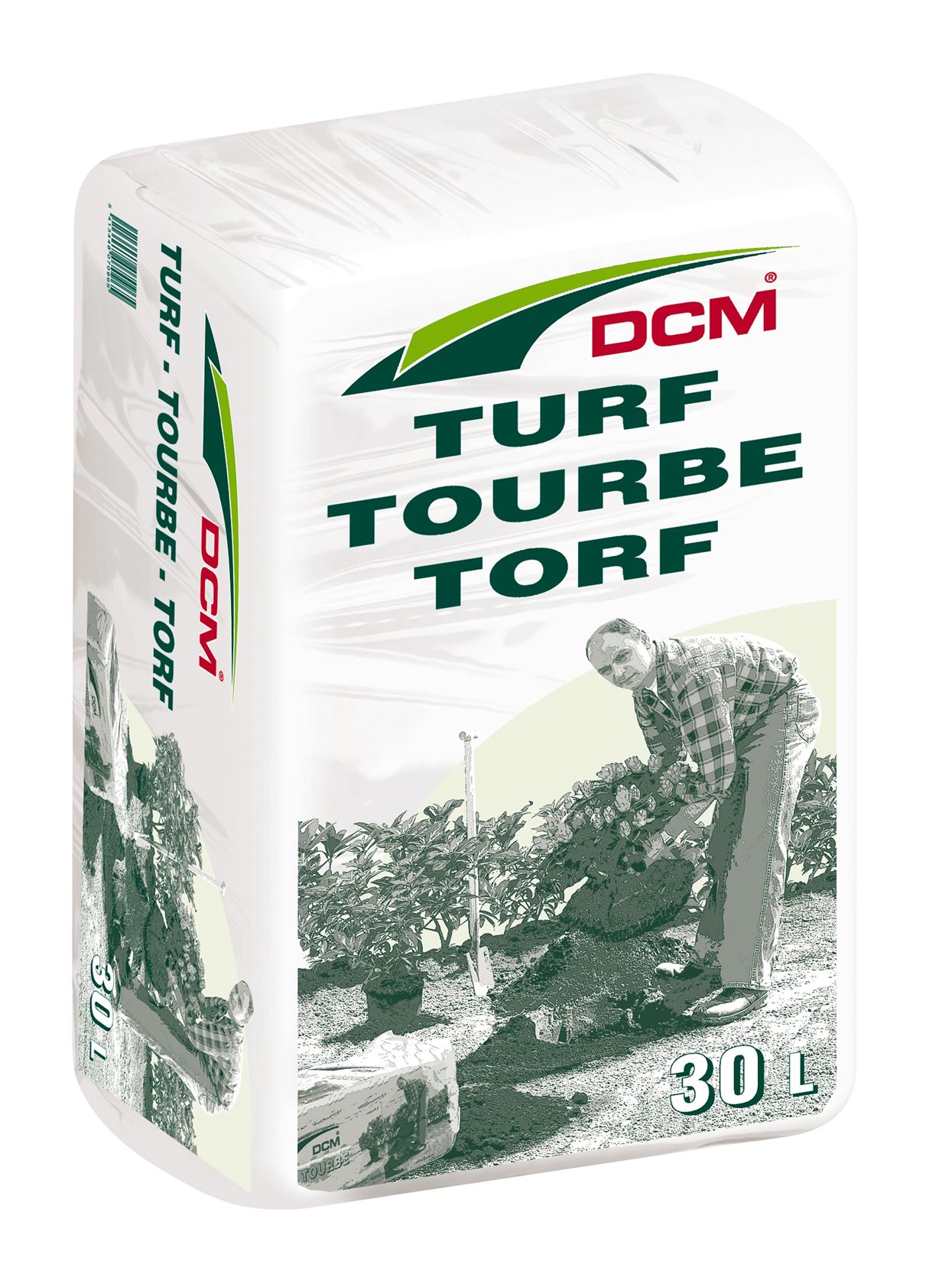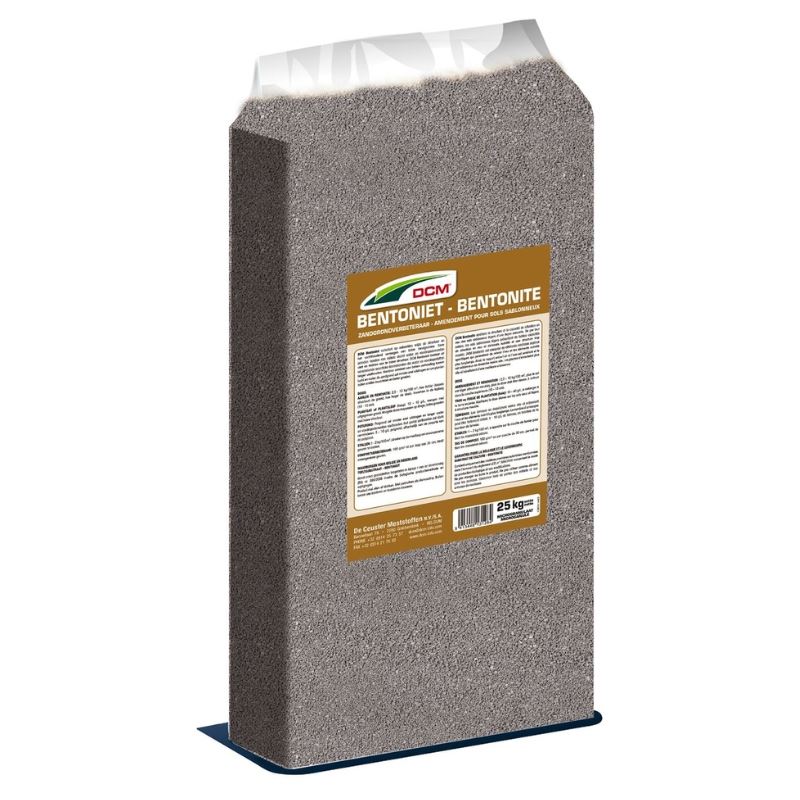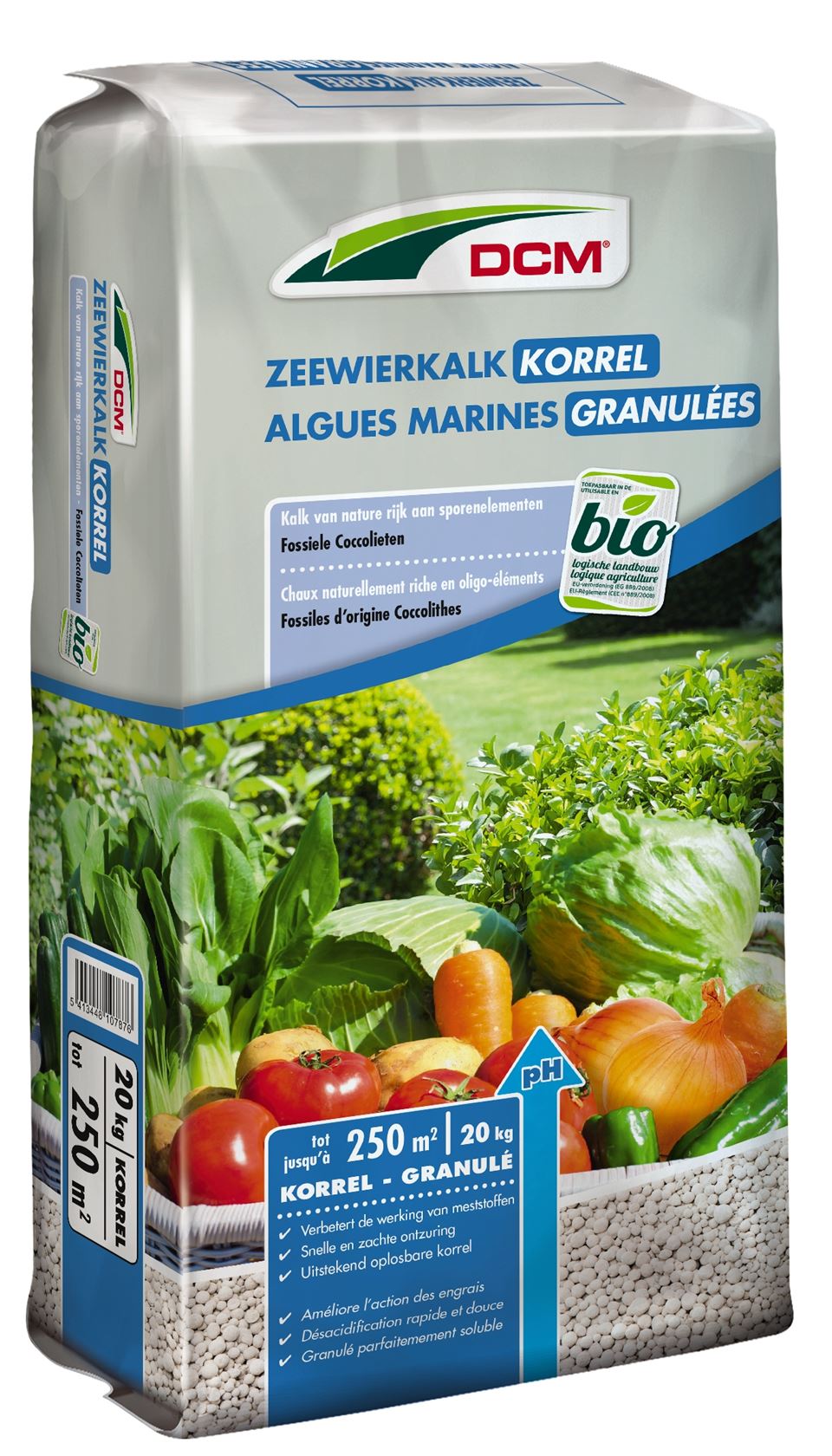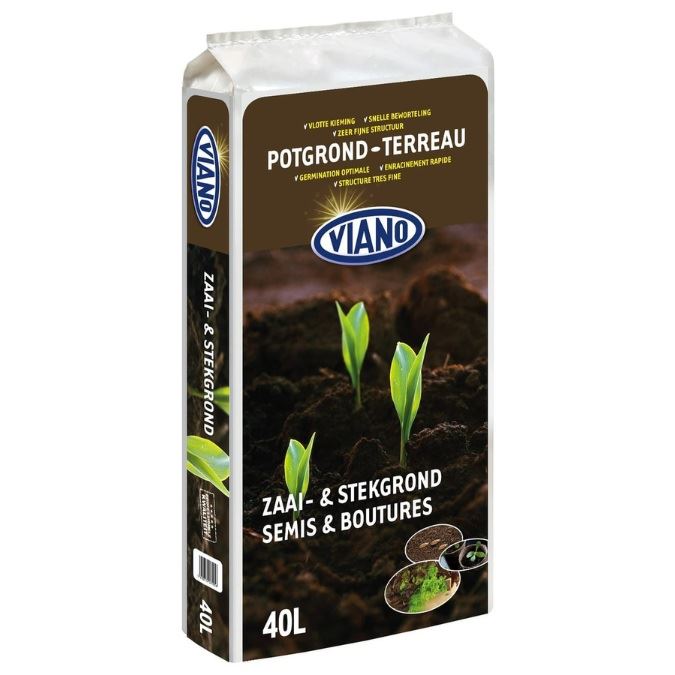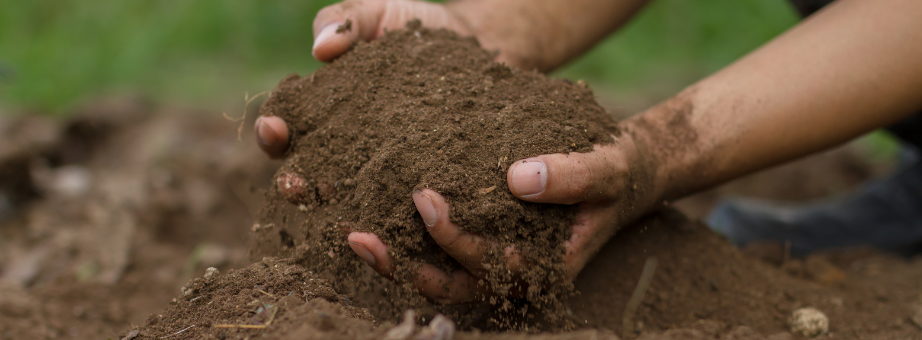
Potting soil and soil improver, what's the difference?
The supply in garden centres can sometimes be overwhelming, especially for the novice (vegetable) gardener. We see all kinds of potting soil, often aimed at specific plants. And then there are the soil improvers. What are they for? First of all, we would like to explain the difference between potting soil and soil improver, because mistakes are sometimes made here.
What do you use potting soil for?
Potting soil, as the name itself describes, is put in a pot to plant flowers or plants. Some people think that potting soil is just earth, and all too often choose the cheapest variety on the market. Do not be fooled by this and do not skimp on potting soil, because a good quality type contains nutrients and minerals that absorb and retain water well. While the water will simply seep through with a cheaper variety. One of the most important components that ensures better water retention is perlite. And this is exactly what is skimped on in the cheaper ""white bags"". Because of this, your plants will dry out faster or get too wet, the number one cause of plant death in pots. You can avoid this by:
- Choose sufficiently large pots: the larger, the more potting soil and the more water storage capacity
- Use good quality potting soil
There are different kinds of potting soil, depending on the plant: buxus, orchid, etc. But for most plants you can just use a universal potting soil. But for most plants you can just use a universal potting soil.
One exception is the sowing and cutting soil! You do not sow in well fertilised soil. The seedlings would grow too strong, and then you get weak little plants that shoot up. You want to slow down the growth just a little so that you get thicker and sturdier plants. In the sowing and cutting soil there are therefore other nutritional elements than in the universal potting soil, and more sand for a lighter and better drained sowing soil.
Tip: After sowing, sprinkle some fine white sand over the soil. As little as possible but until everything looks white. This way the insects will not lay eggs in the soil.
How to use a soil improver?
Soil improver is used in full soil. You add it to the existing soil to ensure an optimal ratio of air and moisture. You mix it under the soil that is already present: half soil improver, half existing soil. Soil improver is much cheaper than potting soil because you need less of it!
There are many types of soil improvers on the market, for every type of soil there is an option; each one has a slightly different composition of fertilisers, pH value and structure. Do you want to plant acid-loving plants, for example, such as rhododendrons? Then you are better off with a soil improver with a lower pH value due to the peat it contains. Soil improvers are mainly used when planting more expensive plants, such as trees and hedges, in less favourable soil conditions or to improve the structure of your greenhouse soil.
It is very important not to be too enthusiastic with all kinds of soil improvers. First check the needs of your garden, because measuring is knowing! You can easily determine these yourself with a pH meter, but you can also take a sample of soil for a specialised soil analysis. You can always come to us for this free of charge during our annual open door weekend.
- Is the pH too high? Then you better mix some peat under the soil to acidify it.
- Do you have a pH-value that is too low? Then your soil is strongly acidified and you can start working with (seaweed) lime. The main cause of nose rot in tomatoes is a lack of lime (too acid soil). For more information on the pH value of the vegetable garden, we refer you to this article.
These soil improvers are suitable for larger vegetable gardens
The soil improver par excellence in the vegetable garden is compost. We therefore always recommend mixing some compost into the existing soil.
Another inexpensive recommendation, which can also be perfectly combined with compost, is farmyard manure. However, please note the following two points:
- The stable manure should be sufficiently digested. We do not recommend fresh compost or farmyard manure because the nitrogen concentrations may be too high and burn the roots of your plants. More importantly, fresh manure is a breeding ground for bacteria that can bring unwanted diseases and viruses into your garden.
- Too much nitrogen (pure farmyard manure) is not good for fruiting vegetables. They need more potassium for fruit development. So do not use this in your greenhouse or in the places where you will be growing peppers, tomatoes, etc.
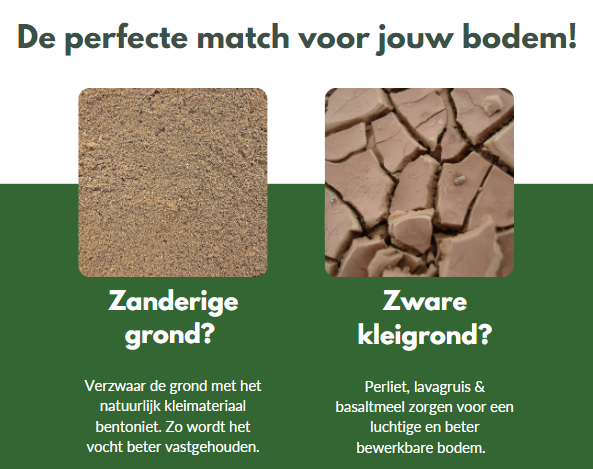
Which soil improver does my garden need?
The type of soil in your garden also plays a major role in the choice of a soil improver:
Sandy soil: bentonite
- Bentonite is a natural clay material that makes the soil heavier and retains water better. It is therefore ideal if you have sandy soil, both in the vegetable and ornamental garden and the lawn. It is important that you work this product into the existing soil. Simply sprinkling bentonite on your lawn will not help much. A typical product for landscaping.
Heavy clay soil: lava gravel, perlite and/or basalt meal
- Lava gravel is a rock that makes the soil lighter and more airy. Ideal to improve the soil structure of that heavy clay soil. You mix in approximately 5 kg of lava dust per 10 m².
- We have already discussed perlite in the potting soils section. It makes the soil airier and is therefore ideal for a heavy clay soil. It also retains moisture better. An additional advantage: this product is 100% natural and environmentally friendly. And we are, of course, always in favour of this! Perlite is available in both the classic white granular form and in a finer variant.
- Finally, the basalt meal, a volcanic primal stone and a typical clay soil improver! It breaks the bond between the clay granules, making the soil more workable. It also has many positive properties such as extra silicon, magnesium, etc. In short, a must-have to improve your clay soil. Depending on how heavy the clay soil is, you will be applying 1 to 2 kg per 10 m².

Tip from Marcel
Basalt meal can also be sprayed as a powder on vegetable plants to combat diseases and pests. The powder forms a barrier on the leaves, and also provides the plants with a solid cell wall. This principle is often used in organic farming. You can use the handy Bobby powder atomiser of Birchmeijer for this purpose.
Another tip: Terracottem is ideal for potted plants. This soil improver promotes growth, improves the soil, provides the necessary fertiliser for the first growing season and most importantly: saves water! Terracottem stores water and nutrients for up to 8 years! This means you need to water up to 50% less. That is good for your wallet and the environment.
You may also be interested in these articles👇
More info? Receive all our gardening tips directly in your mailbox!
We'll only email you handy facts, green advice and our best promotions & discounts. You'll receive it about once a week and you can unsubscribe at any time. No spam, promise 🤞












